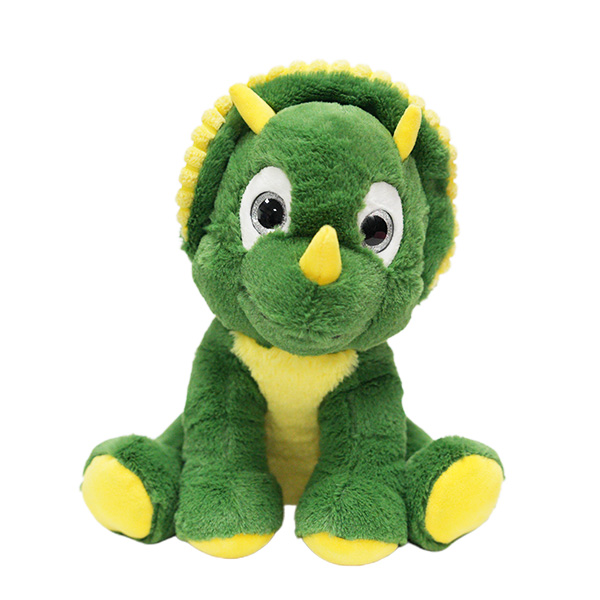Introduction: Why “Plush” Matters in Pillows
In the pillow market, plush pillows are those that provide the greatest amount of softness and a luxurious, cloud-like sensation. For consumers, plushness is typically associated with comfort, coziness, and the sensation of sinking in and relaxing. For manufacturers and developers of products, understanding the types of pillows that provide the softest experience is crucial to the design of products that appeal to specific sleepers.
However, not all plush pillows are created with the same level of comfort. The softness of a plush pillow is primarily derived from its filler material, the fiber composition, the density, and the method in which the pillow is made. In this article, we’ll discuss different types of plush pillows and assess their softness. We will highlight the differences and discuss what to consider when creating the softest plush pillows.
Key questions that will be asked:
- What substances serve as the filling material for a pillow that is both plush and soft?
- Which fill will produce the most “soft” sensation in practice?
- What are the benefits and drawbacks of the softest plush pillows (endurance, support, maintenance)?
- How do industry experts assess the softness of a product?
- What are some of the recommended products and methods of manufacturing?
What Is a “Plush Pillow” from a Technical Perspective
To understand the softest, we must understand what plush is comprised of in the context of pillow creation.
Plush pillows have a high loft (fluffiness) and a yielding sensation. They are easy to compact under the weight, but then they return to their original configuration.
The soft sensation is primarily derived from the filling material (in addition to the outer fabric or casket that facilitates the filling process, moves, compresses, and decompresses).
According to sources associated with the bed industry, the comfort level of a pillow is influenced by both the softness of the fill and the way the fill interacts with the outer shell. Soft synthetic fibers, natural down clusters, or finely ground foam can all have a plush feel.
In settings that involve manufacturing or procurement, achieving a plush softness that is actually achievable involves balancing the fill density, the fiber’s resilience, and the stability of the fill (so that the softness will persist over time).

Key Fill Materials That Deliver Plush Softness
Here is the most common filler material used in plush pillows, and how it compares to other materials in terms of softness:
- Down (Natural)
Down is the term for the soft, fluffy groups beneath the feathers of ducks or geese. Sleep industry experts consider it one of the most comfortable pillows.
The popularity of the word quality is often associated with its definition, which is how many cubic inches of space an ounce of down provides. Higher fill power is associated with more volume and softer, more durable down.
Pros: Very comfortable, pleasant, and with a luxurious “cloud-like” sensation.
Cons: Down pillows can compact, which necessitates regular feathering in order to maintain the loft; they may cause allergies in some individuals unless they are treated or hypoallergenic.
- Alternative ( Microfiber Polyester )
Down-alternative pillows utilize synthetic fibers, typically micro-fine polyester fibers, to replicate the feel of down.
One popular synthetic insulation derived from outside-of-the-park insulation technology is PrimaLoft; its fine polyester fibers offer a high loft and softness, making them a strong substitute for down.
Microfiber filling is commonly employed because it provides softness, is hypoallergenic, and is typically more budget-friendly than natural down.
Pros: Soft without being overly delicate, machine-washable (independent of design), and more allergy-friendly.
Cons: Over time, low-quality microfibers may cluster or compact; the softness of the fibers may be degraded without proper planning.
- Fiber Optics/Polyester with Silicone
Many plush pillows utilize hollow fibers derived from polyester, which are often siliconized. This enables the pillow to trap more air and provide a fluffy, cushiony sensation.
These fibers are designed to maintain a luxurious appearance and have a greater resistance to flattening than coarse polyester.
Pros: budget-friendly, long-lasting, washable.
Cons: May have a lack of heat or feel less airy than down.
- Crumbled /aggregated Memory Foam
Memory foam, especially in the form of small pieces or clusters, can provide a soft, plush sensation.
Unlike block-shaped memory foam, shredded foam allows space to move, conform, and “fluff” like fiber down variations.
Pros: Increases the softness of the cushion, providing additional support if needed (primarily when combined), malleable, and durable.
Cons: Heavier, may have retained heat. This is often necessary because of the breathable cover.
- Blended & specialized fibers
Some premium plush pillows have additional fills: for example, microfibers plus memory foam clusters, or down alternative fibers plus gel infusions.
Advanced fibers like Suprelle Micro are intended to imitate the fluffiness of down. Cuddle Down believes that Suprelle Micro is 6 times more slender than standard fibers, which results in a remarkable softness and resilience.
Pros: Engineered to have a soft and efficient performance, customizable sensation.
Cons: Higher expense, complexity in production.

How are the Softest Plush Pillows Evaluated in Industry?
To determine which plush pillows are truly the softest, professionals rely on several criteria:
- Hand Feel / “Hand Test”
Manufacturers and quality control teams assess softness by hand — pressing, compressing, and evaluating recovery.
For example, soft down clusters are evaluated by how easily they compress and then rebound, while synthetic fibers are assessed for springiness and loft.
For down: higher fill-power means higher loft and softer feel.
For synthetic fills: density and fiber length/structure influence softness.
- Resilience / Recovery
How well does the pillow regain its shape after compression? Plush pillows should rebound smoothly, not stay flat.
For memory-foam clusters, evaluation includes how the foam shifts and recovers.
- Durability & Longevity
Softness must persist over time. Fill migration, clumping, or flattening can degrade plushness.
Testing may involve repeated compression cycles or wash/dry cycles (for washable synthetic pillows).
- Thermal & Breathability Performance
Plush pillows should ideally maintain comfort without trapping excessive heat.
Material choice (natural down vs synthetic) and fill structure significantly influence thermal regulation.
Trade-Offs of Choosing Ultra-Soft Plush Pillows
While the softest plush pillows provide exceptional comfort, there are trade-offs that manufacturers and consumers should carefully evaluate:
| Trade-Off | Description |
| Support vs Softness | Ultra-soft fillings (especially down and microfiber) may offer minimal structural support. Shredded foam or hybrid designs can address this, but may feel heavier. |
| Durability | Synthetic fibers and down may compress over time. Without proper fill design or chambering, pillows can flatten. |
| Allergy Considerations | Natural down may cause allergic reactions. Down-alternatives mitigate this, but can have other issues. |
| Temperature Regulation | Plush synthetic fills may retain heat. Memory foam can be particularly warm unless ventilated. |
| Care & Maintenance | Down often requires special cleaning; synthetic plush fills may be washable but require fluffing; foam cores require special treatment. |
| Cost | High-fill-power down and premium fibers are more expensive than standard polyester fills. |
Matching Plush Softness to Use Cases
Depending on your intended audience (e.g., home sleepers, hospitality, healthcare), different types of plush pillows may be appropriate:
Luxury/ Premium Bedding: High-fill-power low, Suprelle Micro, low + hybrid.
Allergy-Safe: Similar to microfiber down, but with a more alternative design, similar to PrimaLoft.
Helpful Yet Recommended: Shredded memory foam or a combination of memory foam and fiber.
Budget Plush: Filled with silica fiber.
Designers and manufacturers should consider fillings based on consumers’ preferences, budget targets, and product performance goals.

Best Practices for Manufacturers & Product Developers
If you’re in charge of creating or finding plush pillows, here are some suggestions for making sure they are the softest of pillows while still providing quality and performance:
Select a filling material that is of high quality
For low: seek out larger clusters of power.
For manufactured: choose microfiber that is super-fine or fibers like Suprelle that have a softness and resilience similar to that of natural fibers.
Distribute the filling material as efficiently as possible
Employ the chambered method in the pillow to prevent fill migration and maintain a consistent loft.
Tasteable and Resistant
Consider hybrid designs (fiber + shredded foam) that provide a plush feel of comfort as well as support.
Temperature Management
Use covers that are breathable and have ventilation in them to regulate the heat retained.
For pillows that are hybridized with foam, choose perforated or gel-infused versions of foam.
Robustness Testing
Run tests that compress and then recover.
Test the washability of the fill (for synthetic substances) and make sure the substance doesn’t compact or degrade.
User Education
Give care instructions (e.g., how often to fluff, if the machine is washable, and how to re-fluff after the wash).
Highlight the plush design benefits of marketing (fill type, loft, and softness rating).
Summary: What Are the Softest Plush Pillows?
The most comfortable pillows are typically filled with high-fill material or synthetic microfibers that are extremely fine.
Shredded memory foam or a hybrid pillow that offers balance: plush cushion plus support.
Fills that are synthetic (microfiber or hollow polyester) provide allergen-friendly, washable, and budget-friendly extraflesh options.
Designers must consider the softness, resilience, thermal behavior, and durability of pillows when deciding on their design or production.
Conclusion
For both consumers and professionals in the industry, understanding the plush pillow’s softness is more than just a feel; it involves the proper combination of filling material, construction, and performance. From the luxurious loft that descends to the synthetic microfiber that is both accessible and soft, as well as the memory foam that is versatile and engineered, there is a variety of substances that provide extra comfort.
If you’re designing a plush pillow line, consider what your intended audience values most. Do they desire the ultimate softness of “cloud”? Are they responsive to allergenic components or require cleaning? Will the pillow be able to stand the rigour of the machines without succumbing? By combining material science with the needs of the consumer, you can create remarkable pillows that feel extra special.



